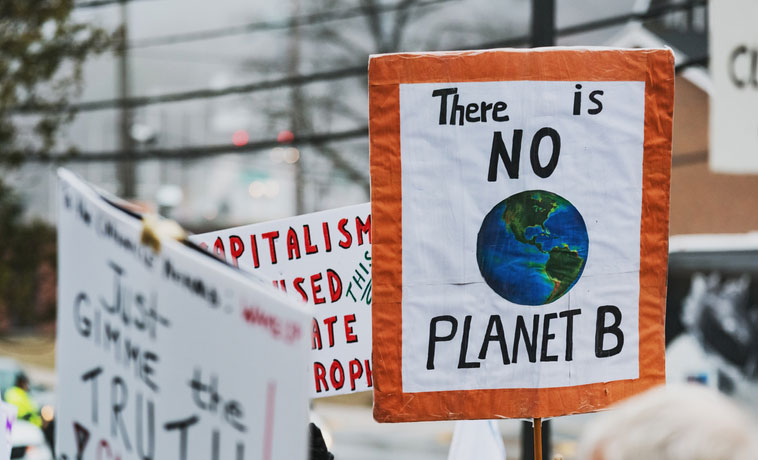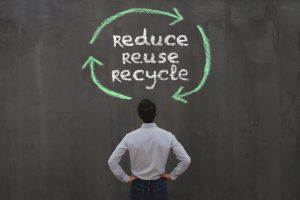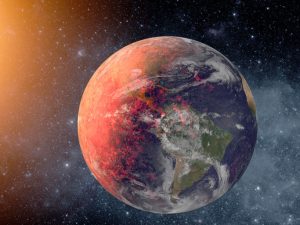
The COVID-19 pandemic, the Black Lives Matter movement, and a presidential election that proved to be one of the most contentious in history have grabbed the public’s attention recently.
And in the background of it all, we have a looming climatological nightmare to contend with. January of 2020 was the warmest January in the record books. February was the second hottest February ever. March tied for second and third. And with all the other news in the world, this very news-worthy fact hasn’t made many headlines.
Sustainability experts, though, see opportunity in the dangers of the moment. Great Britain operated for 67 consecutive days during the pandemic without reverting to coal power, for example, the longest sustained period without it since 1882 according to @UK_Coal, an account dedicated to monitoring coal consumption. That offers a glimmer of hope for sustainable energy, but with stakes so high, the goals are moving up, too.
While the world is absorbed with today’s crises, the old challenges have not simply disappeared. The people working on fixing them haven’t, either, and they are seeing a grand opportunity emerging from the chaos and despair of early 2020: the chance to remake the world economy in a sustainable circular model.
How Does a Circular Economy Work?

For sustainability experts, a circular economy works in the way all economies should work: by decoupling growth from the consumption of finite resources. The result is a regenerative base that can provide for the needs of market participants without waste, pollution, and consumption that leads to long-term collapse.
We get there through manufacturing and design principles that prioritize durability, recyclability, and a broad perspective on product lifecycle. That can look quite different for different economic sectors, but some examples include:
- Use of bio-based materials in construction and manufacturing
- Renewable energy in transportation
- Perpetual re-use of synthetic and inorganic materials like plastics that should not contaminate the environment as waste
Of course, sustainability is pretty much the definition of a circular economy. Any process that requires more input resources than it puts out has to pull them in from outside the system. And, of course, other than solar energy, there’s really nothing that’s outside our system when you look at the little blue-green bubble we all live on.
There are also some perspective shifts required. The focus on ownership in the modern economic system has to shift to a use-based model. Some argue that what matters most is access to the utility and comforts the things we own can bring, and that actual individual ownership itself isn’t all that important.
You can already see this shift occurring in terms of adoption of mass transit and ride-sharing services, where people have made the mental leap that needing to move from point A to point B does not automatically require owning a car. For circular economists, this remains true of many of the goods that we typically purchase over the course of our lives.
All of this requires large-scale cooperation and coordination. And that may be why circular economy adoption will get a big boost in 2023.
What Makes Now Different for Circular Economy Proponents?
Circular economy advances during the coronavirus response aren’t just some academic exercise, however. Many regions are explicitly building circular economics into their recovery plans for the virus. Amsterdam, for instance, has embraced their pre-existing “doughnut economics” plan as the primary basis for their economic rebuilding after coronavirus.
Worldbank even argues that a circular economy would support the public health response to pandemics like COVID-19, through trickle-down effects like PPE (personal protective equipment) designed for re-use from the ground up and redirection of surplus foodstuffs to those in need after massive job losses.
The European Union Leads The Way in Circular Economic Planning
The European Union has been working on circular economic planning since at least 2015. Their 2020 plan is the most ambitious yet. Part of the European Green Deal, it was developed in a pre-COVID world… but the pandemic may give the implementation an unexpected boost.
The plan emphasizes:
- Sustainable product design – Mandating requirements that new products incorporate as much recycled material as possible and are easy to reuse, repair, and recycle versus the disposable paradigm found so commonly today.
- Consumer empowerment – Providing information to individuals to allow them to easily make more informed choices based on the validated repairability and durability of products.
- Circularity in production processes – Sectors such as packaging, plastics, textiles, and food will get a top-down overview to help industry create virtuous cycles out of their production and recycling efforts.
Almost by definition, however, Europe can’t do it alone. But the onset of coronavirus has also emphasized the need for cross-border cooperation and big-picture analysis. The virus doesn’t respect borders; the same is true of other major ecological threats. Having learned the value of cooperating to beat one crisis, governments may be in a better political and policy position to do the same with others.
Circular Economics Offer a Lifeline to Both Individuals and Climate

A sustainable economy has obvious benefits for the climate. But what may not be as obvious is how much good it could do for individuals who have been thrown out of work by the COVID-19 epidemic.
A comparative study from the University of Applied Sciences Augsburg and the Centre for European Economic Research finds positive employment impacts are already beginning to emerge in places that have adopted circular economic practices: Increased individual spending fueled by lower prices, higher-quality and more labor-intensive recycling methods are creating jobs, along with more skilled manufacturing jobs to build more durable products in the first place.
It’s not quite a free lunch; intensive training would have to come along with the transition. But in a period of time where so many are out of work, and traditional economic activity is unlikely to spontaneously regenerate, that training will be necessary anyway. It may as well come in service of a greater and more sustainable cause.
It’s a moment, too, where social justice issues have come to the forefront. Sustainability advocates are well aware of how connected the issues are. Now that the public has a clear appetite for change, they might find a circular economy delivering the best of both worlds.




